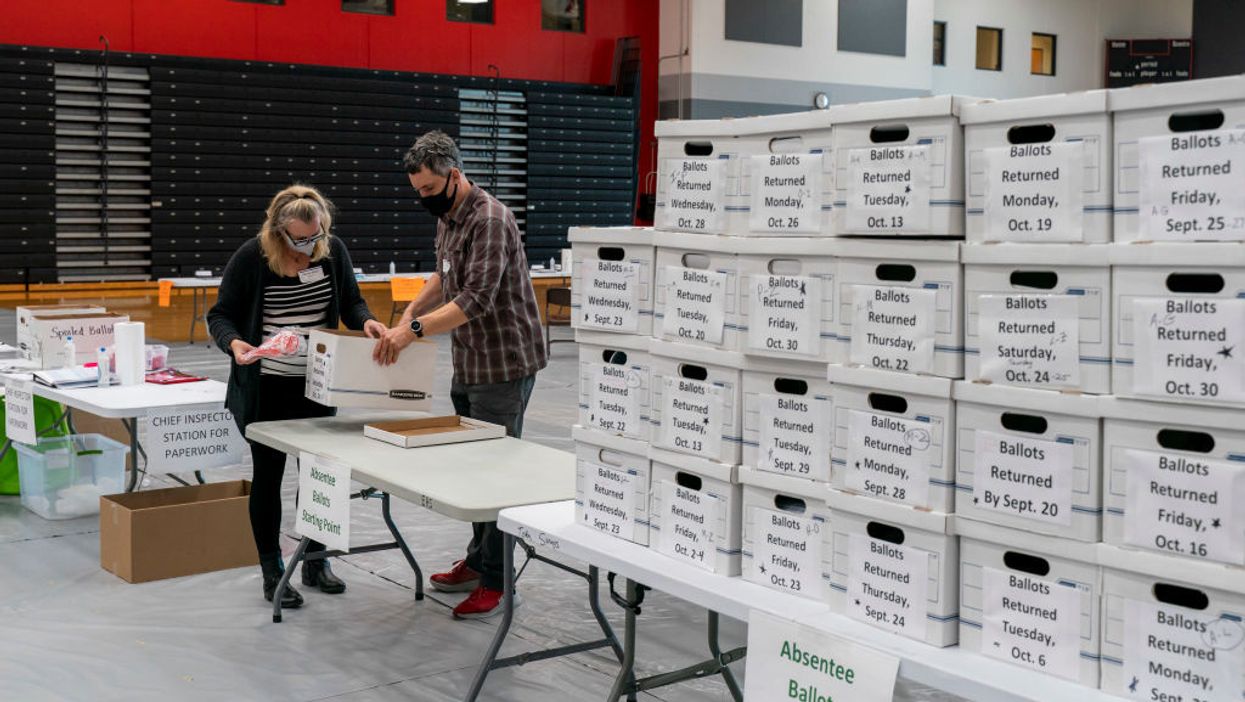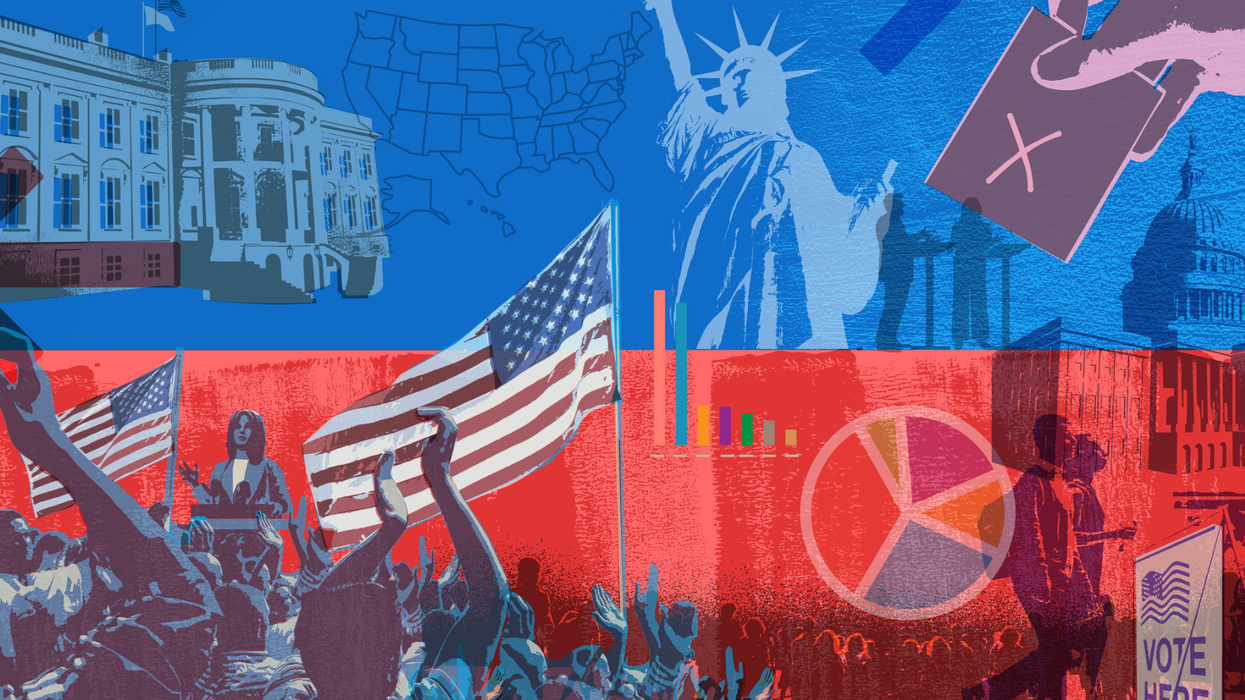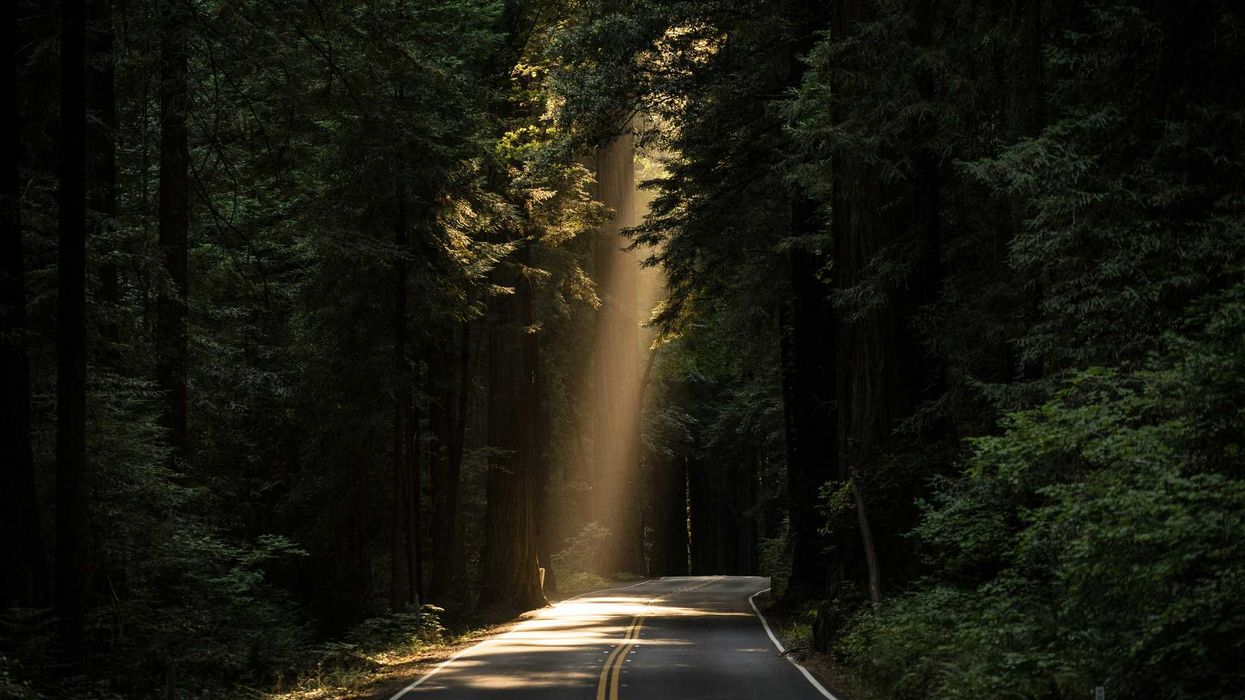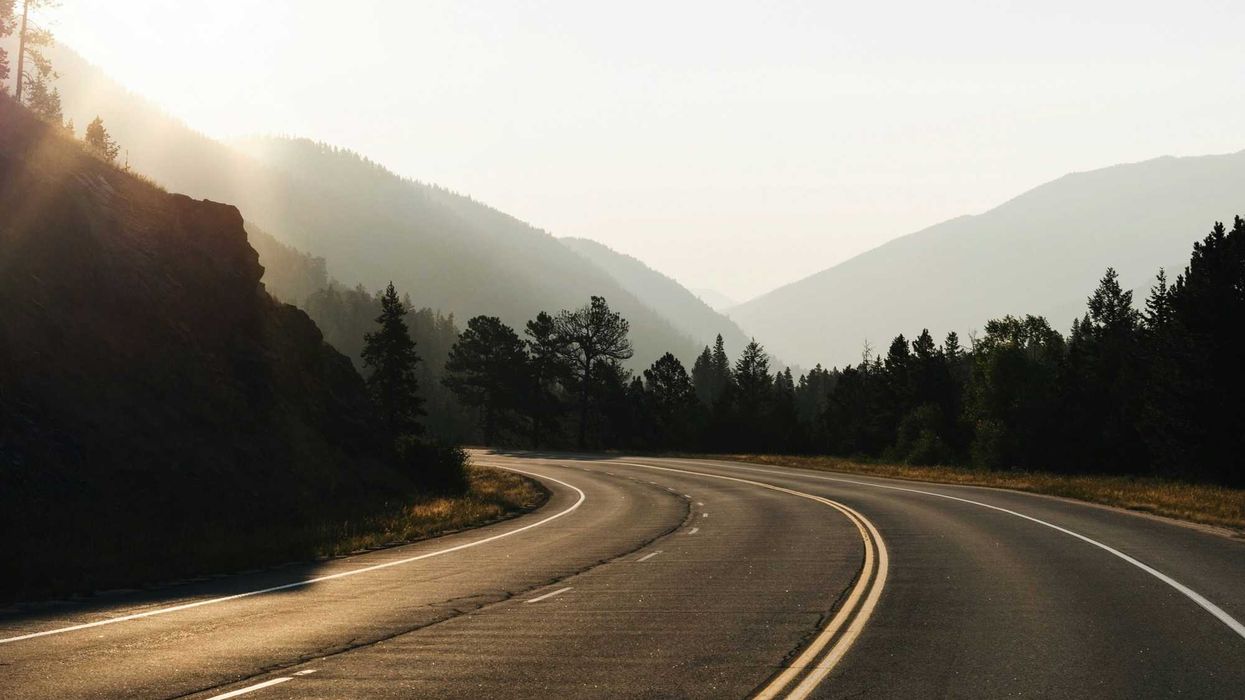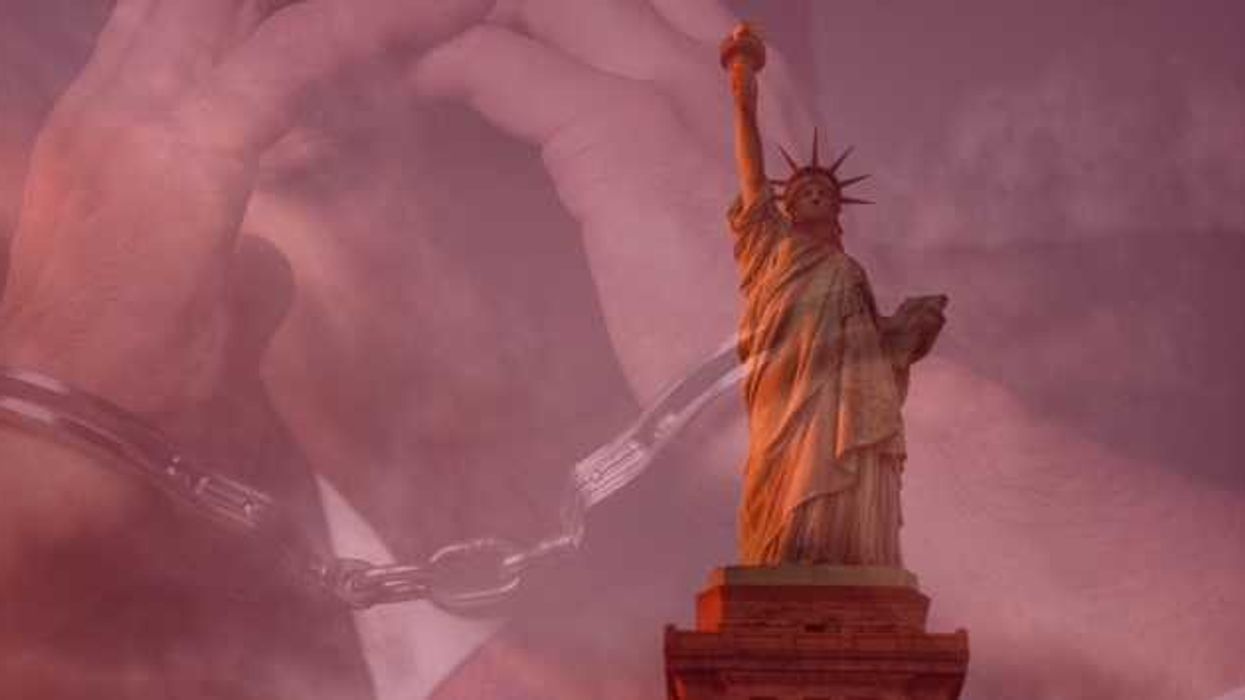To quote the great 1970s power ballad: Two out of three ain't bad.
That Meat Loaf gold record provides a good summation for the record-breaking turnout in the presidential election: It looks like almost exactly two out of every three eligible Americans voted.
That's an estimated 159.4 million adult citizens, 20.5 million more than the previous high four years ago. And it's the strongest turnout rate since 1900 — when, by the way, women still did not have the franchise and most Black citizens and other people of color were effectively blocked from the ballot box.
Why the "ain't bad" summary, then? Because the total nonetheless means nearly 80 million people who had the right to vote decided not to. Because this year does not change how the United States still ranks near the bottom of the world's developed democracies when it comes to election participation. And because while the youth vote increased significantly, half of the population younger than 30 still did not go to the polls for a presidential election highly consequential to their future.
The numbers, which will be finalized as results get certified in the coming weeks, give advocates for a more functional democracy plenty to celebrate but also lots to keep worrying about.
Bigger shares of people voted this year than in 2016 in every state. And in all but three states — Mississippi, Missouri and Oklahoma — the turnout was better than in 2008, when Barack Obama was elected president. That year saw the highest overall turnout (62 percent) of the past half century until now.
The largest increases over four years ago were in Hawaii at 12 percentage points, Arizona and Washington at 10 points, and Utah and Vermont at 9 points.
Hawaii had decided before the coronavirus pandemic to switch to elections almost entirely by mail, as Washington and Utah had done in time for the 2016 contest. Vermont was among the five states, plus D.C., that reacted to Covid-19 by mailing ballots to all active registered voters.
Turnout was 76 percent in the two other states where vote-by-mail was standard practice before this year, Colorado and Oregon, placing them in the top five for best civic participation along with perennial top-finishers Minnesota (80 percent) and Maine (79 percent) plus presidential battleground Wisconsin (76 percent).
Credit democracy reformers
To be sure, much of the turnout surge can be attributed to the heightened passions and polarizing politics of the presidential contest, which former Vice President Joe Biden has won with 306 electoral votes — and at least 5.8 million more popular votes than President Trump.
But dozens of groups in the world of good governance, which made problem-free voting during the pandemic their galvanizing cause this year, deserve credit as well.
"In an election in which our democracy itself really was on the ballot, the democracy reform movement had a major impact — especially in pushing back against voter suppression targeting racial minorities," Zachary Roth wrote in an assessment of turnout for the Brennan Center for Justice, a progressive think tank.
In the end, 34 states decided to make it easier to cast a ballot this fall — either voluntarily or as the result of a lawsuit, but always under pressure from an array of democracy groups. After asking for 10 times as much, they also persuaded Congress to send $400 million to the states to make voting during the pandemic easier and safer.
Four states expanded the availability of polling places ahead of Election Day, while most of the other changes encouraged voting by mail and eased the rules governing the completion of absentee ballots.
Beyond the six places that switched to universal vote-by-mail for this year only, 10 states encouraged the use of absentee ballots by sending all their voters an application form. A dozen effectively abandoned normal excuse requirements for not voting in person. Four decided to pay the postage on mailed ballots. Seven reduced or dropped requirements for a witness or notary signature on envelopes, while at least four others agreed to give voters a chance to fix (or "cure") missing signatures or other flaws instead of simply having the mailed ballots thrown out.
The result was 65.5 million valid absentee ballots returned through the mail or in drop boxes by Election Day — double the total four years before and about two of every five votes cast in the entire contest.
Registration is key
Law professor Justin Levitt of Loyola Marymount University in Los Angeles, an expert on voting, argued that while all the voting ahead of time (another 36 million ballots were cast in person before Nov. 3) eased some of the pressure on Election Day, it probably didn't cause much of an increase in turnout.
While no-excuse absentee voting boosts participation in low-turnout elections like off-year municipal races, he said, it has proved to have only a "fairly modest" effect on turnout in presidential and midterm years.
"But the single most important gateway to voting is registration," Levitt said by email. "So 21st-century registration reforms (like automatic and portable voter registration, with an election day registration failsafe) have reliably seemed not only to boost turnout, but to increase accuracy and reduce costs."
Nineteen states (plus D.C.) allowed residents to both register and vote on Election Day this year, and a couple more will soon join them. The National Conference of State Legislatures, citing multiple studies, says same-day registration adds an average of 5 percent to turnout.
But even a quarter of the people registered did not vote this time. The World Population Review, a company that aggregates demographic statistics, said 214.3 million people were registered to vote — meaning that turnout was 74 percent of those on the registration rolls.
Who didn't vote, and why
So what do those 80 million non-voters — including 55 million who signed up to vote — have to say for themselves? The politics site FiveThirtyEight worked with the pollster Ipsos on a survey released just before Election Day that looked at that question in a creative way.
Instead of just asking people why they don't vote, pollsters interviewed more than 8,000 eligible Americans and asked a series of questions about politics and voting. They were then able to match the names of 6,000 of those people to their voting histories and could analyze the attitudes associated with infrequent or never voting.
Generally, the non-voters were younger, poorer and less educated than people for whom voting is a regular practice — and also less likely to identify with a political party.
The attitudes associated with low-frequency or non-voters included the belief that:
- They didn't like any of the candidates.
- The system is too broken, so voting doesn't matter.
- All candidates are the same, so why vote.
- They don't believe in voting.
- It doesn't matter if they vote.
- No one is talking about issues important to me..
We're No. 30
Another sad statistic, unlikely to change too much even with the large jump in turnout this year, is how low the United States ranks in political engagement among developed democracies.
Based on the most recent national election figures before this year, the U.S. ranked 30th in turnout among 35 nations belonging to the Organization for Economic Cooperation and Development, an international body focused mainly on boosting member economies and trade.
Compulsory voting in a handful of countries — Australia is the biggest credible democracy where exercising the franchise is mandatory — is one factor that contributes to higher turnout. And a 2003 study by Canadian election officials, of 151 elections in 61 democracies over more than a decade, found turnout was 10 points higher in countries that allowed voting by mail or in advance of the final election day.
One part of the turnout picture that again received a lot of attention was the effort to get more young adults to the polls — a quadrennial effort by civic activists and partisans alike, who say every time that younger voters are poised to cast the decisive vote in an election where they may have the most at stake. This time those efforts paid off, but only by some measures.
Half of citizens ages 18 to 29 voted this year (50 to 52 percent), and that rate may go higher when the tally is finalized, according to an estimate by Tufts University's Center for Information & Research on Civic Learning and Engagement, which focuses on the youth vote. That compares to an estimated 42 to 44 percent in 2016.
But even with this increase, turnout by young people was nowhere close to the 66 percent nationwide share. And the national exit poll pegged their share of the electorate at 16 percent, about in line with their share of the population but down 3 points from their percentage of all votes cast in 2016.





